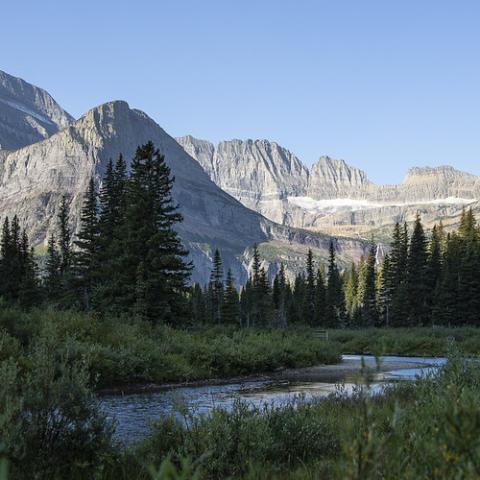
This helicopter with specially designed tanks stocked juvenile bull trout into Grace Lake at Glacier National Park/NPS
It wasn't a long trip, as the crow flies, and it required the help of a helicopter and a hatchery, but so far it appears that efforts to bolster the bull trout population in Glacier National Park in Montana are proving successful.
In response to broad declines in bull trout numbers on the west side of the park, resulting from increased non-native lake trout presence in park lakes, the park and its partners embarked on a project to “rescue” the remaining juvenile bull trout in the Logging Lake drainage.
This rescue mission dates to 2014, with 110 wild juvenile bull trout that remained in Logging Creek, which is downstream from both Grace Lake and Logging Lake. Fisheries biologists say genetic estimates suggested this small group of fish came from only two or three parents.

Grace Lake, Glacier National Park/NPS
Due to the small number of fish that remained in the system, some bull trout from taken from the Quartz Lake drainage, located in the next drainage to the north, to enchance genetic diversity.
A total of 27,000 eggs were taken from nine wild female bull trout and fertilized using male bull trout captured on their spawning migration into Quartz Creek. Fertilized eggs were hiked out six miles in small coolers, then transported to the Creston Hatchery, and reared for 6-18 months.
From 2017-2020, 4,879 juvenile bull trout were planted into Grace Lake to supplement an earlier wild fish transfer. The most recent fish planting occurred on June 22, when 201 juvenile bull trout were released into the lake.
Results to date are encouraging. The bull trout are surviving well, with some of the initial fish translocated at 2” now exceeding 20” in length, according to park staff.





 Support Essential Coverage of Essential Places
Support Essential Coverage of Essential Places






